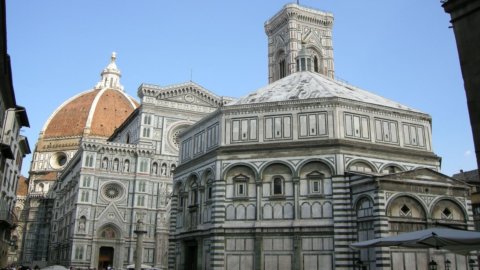The social structure of Florence in 2011 closely resembles that of 1472, characterized by the beginning of the Medici lordship. More than half a millennium of history and political twists and turns, from Girolamo Savonarola to Matteo Renzi, have not affected much on the ranking of both the wealthiest and the poorest families. This is the surprise result achieved by two scholars from the Bank of Italy, Guglielmo Barone and Sauro Mocetti, who published an article on the outcome of their research on the website www.Vox.eu with the title “What's your ( sur)name? Intergenerational mobility over six centuries".
The study disputes a widely held thesis. And that is that “Societies characterized by a high degree of transmission of their socio-economic characteristics are not only commonly considered unjust but also inefficient because they are incapable of enhancing the qualities of those who start from more disadvantaged situations. A superficial analysis, based on empirical evidence, justifies this current thesis: differences tend, at first sight, to decrease over the years. But this research challenges this common thought by comparing the tax returns of the Florentine dynasties (signaled with nicknames) between 1427 and 2011. The richest taxpayers of 2011 appear to be direct descendants of the wealthiest families present in the tax rolls of six centuries ago . This despite the enormous differences that have accumulated between the two eras from a demographic, political and economic point of view”.
The study, which we attach below, was made possible by the digitization of the data available in the Florentine archives which report the sensitive data of Florentine taxpayers since 1472, including nicknames, activities, income and assets. These data have been compared with the tax rolls of 2011. Well, surprisingly it turns out that both the "top five" and the "bottom five" of the ranking occupy the same position as their ancestors in terms of wealth, reputation and economic value of the work they do. Over the centuries, the nobles of Renaissance Florence became textile or shoe manufacturers, famous lawyers or established doctors. But they have maintained economic leadership and social prestige. “Judging by the results – comment the two scholars – one could say that a glass bell protects the descendants of the upper class from economic misfortunes”.
One wonders if the one in Florence is an exceptional case. Probably not, answer the two scholars. On the contrary, it is reasonable to hypothesize that similar results could be obtained from the study of similar advanced societies in Western Europe. If anything, the impression is statistically confirmed that for access to certain professions and certain incomes (see lawyers, bankers, doctors and pharmacists or goldsmiths) the descendants of ancestors who practiced the same disciplines have a strong advantage. A fact that confirms the persistence of inequality over the centuries, favored by market (and non-market) mechanisms that govern access to certain "liberal" trades, with a strong undercurrent of "inequality".
Other than Piketty: certain unwritten rules challenged the French and industrial revolutions, as well as the genius of Galileo Galilei or Leonardo da Vinci.





